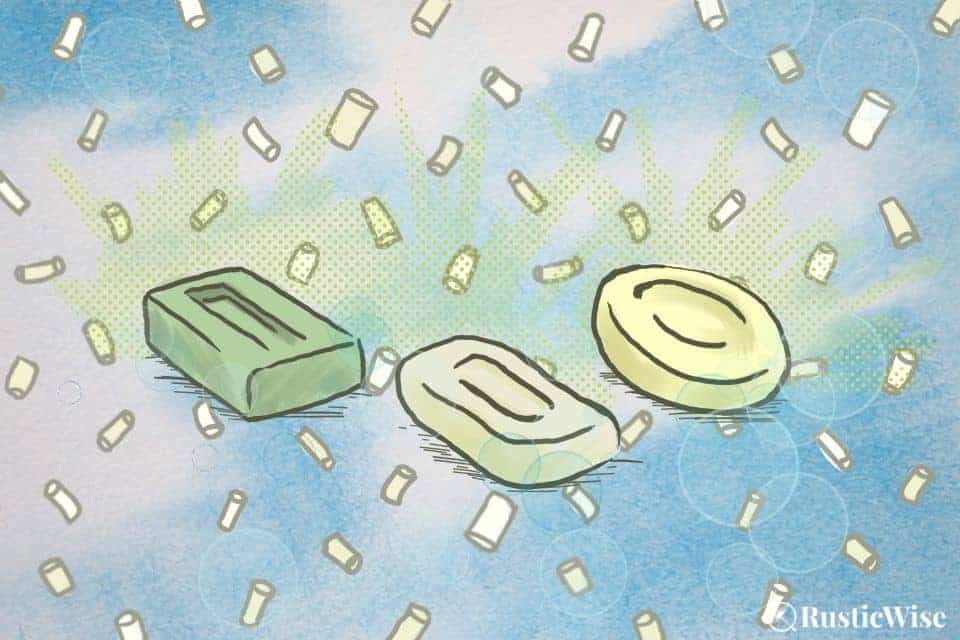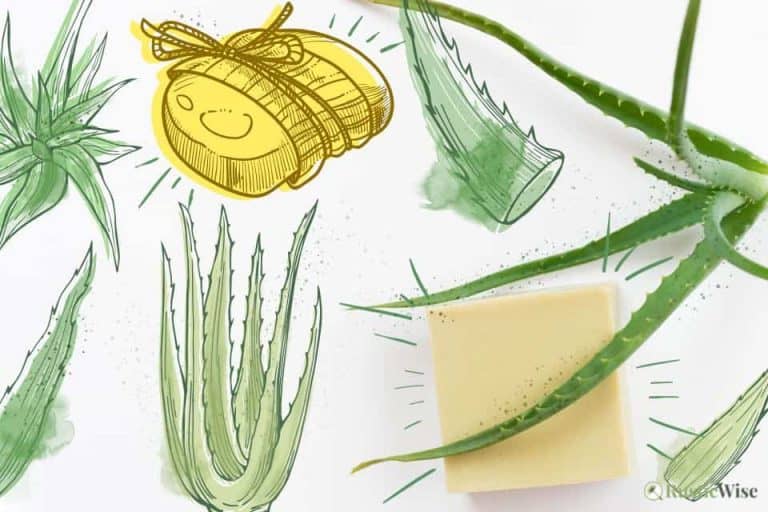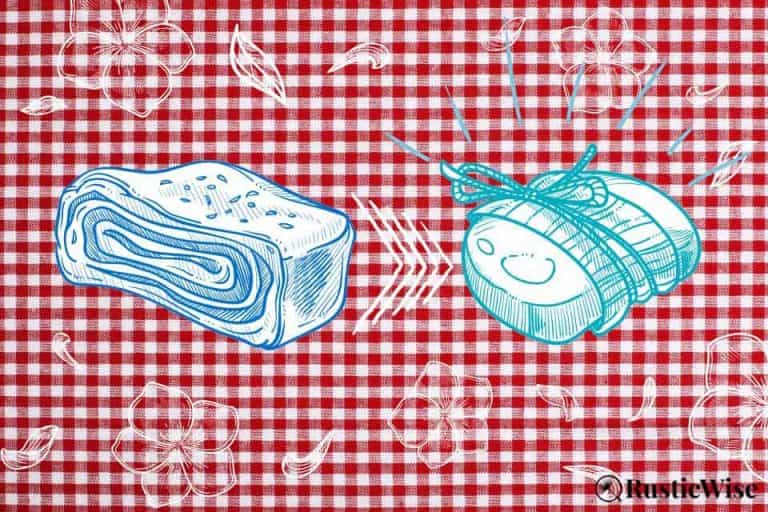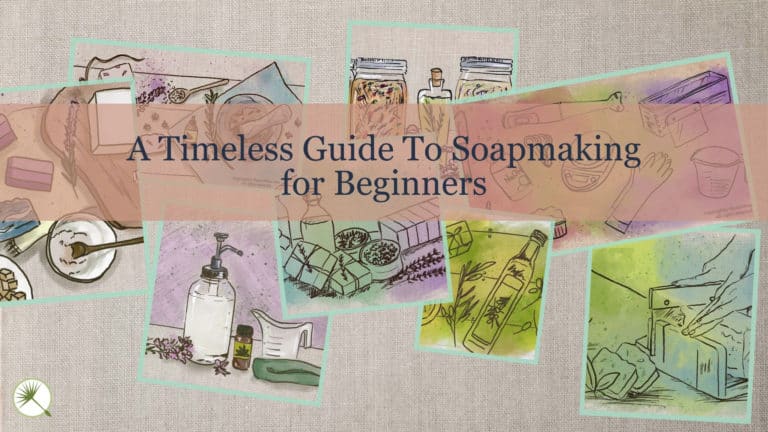What Are Soap Noodles and What Can You Do With Them?
When I heard the term “soap noodles” I was intrigued and decided to look it up. I went down the rabbit hole.
What are soap noodles, exactly? It turns out this term applies to more than one thing. Most commonly, soap noodles refer to the raw materials used as a soap base (one that literally looks like short noodles). Noodles are used to manufacture commercial soap bars. Soap noodles are made of saponified vegetable oil such as coconut oil, olive oil, palm oil, or palm kernel oil, or animal-based fats such as tallow.
Producers buy these soap bases in bulk, melt the noodles, then add their own fragrances and colorants to make customized soap quickly. They then pour the soap batter into molds to make extruded soap.
The term soap noodles (or soap needles) also refers to surfactants that many DIYers use to make shampoo bars and lathering bath soap. These are anionic surfactant noodles such as sodium cocoyl isethionate (SCI), and sodium coco sulfate (SCS).
Let’s clear the cobwebs and look at different soap noodles and what they’re used for. We’ll also look at how you an use SCI and SCS in homemade soaps.
What are soap noodles? Let’s take a closer look
Soap noodles, soap needles, and soap flakes can refer to many things:
- Bulk soap bases used to make mass-produced soap.
- Mild surfactants such as SCI and SCS home crafters use to make shampoo bars. These are sometimes called surfactant needles.
- Re-batching or hand-milled soaps often use fully saponified soap flakes or noodles to form new soap. Some home soapers prefer to make soap this way; others use this method to salvage a bad batch of soap.
- During my search, I also found people selling soap that looks like noodles or ramen—literally soap shaped like noodles. (A funny distraction that’s obviously not what the broad term means!)
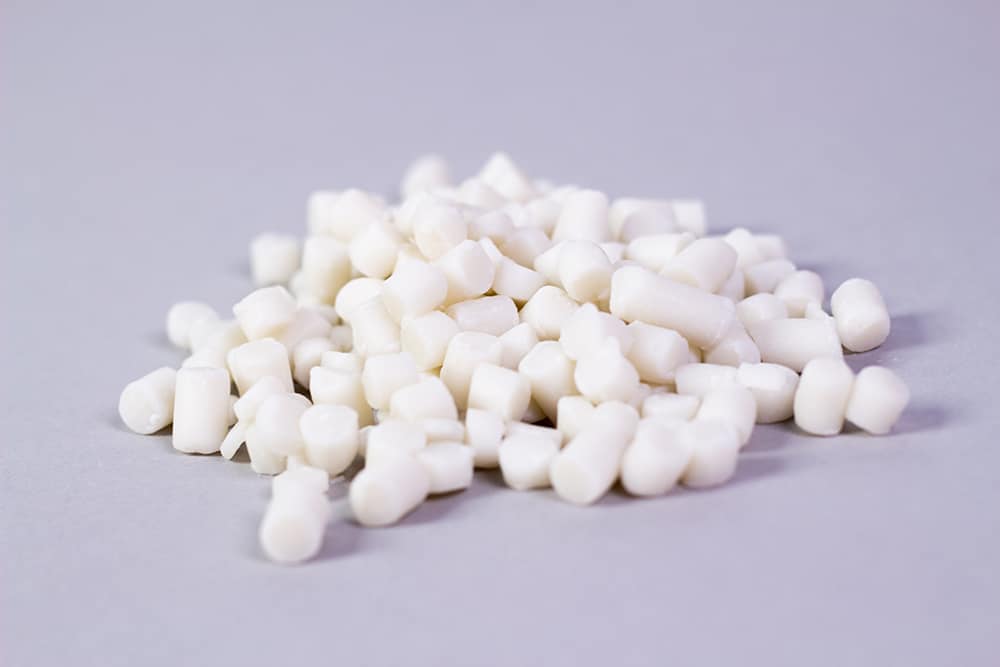
Credit: Stephenson Personal Care
Why producers use soap noodles
Making soap with soap noodles provides manufacturers with the benefit of time and convenience. Instead of waiting for your homemade cold process or hot process soap to set and cure for several weeks before using, they’re starting with a fully saponified base, sort of like the melt and pour method.
The finished soap base or noodle are the alkali salts of fatty acids. For example, basic soap noodles derived from palm oil would contain palmitic fatty acid, sodium hydroxide lye, and glycerol.
Soap noodles are available in bulk quantities. In a nutshell, the commercial production of soap bars goes like this:
- Melt the soap noodles.
- Add any colorants and fragrances (synthetic or natural).
- Add any additives such as exfoliants or extra moisturizers.
- Combine all ingredients together.
- Refine or mill the soap mixture. This involves passing the soap through milling equipment, which consists of large stainless steel rollers and mesh screens. This helps to create a more uniform consistency and a longer lasting bar of soap. (Tripe-milled French soap passes through three mesh screens.)¹
- Finally, the soap is extruded, pressed, and cut into custom shapes.
What are soap noodles good for?
Soap noodles consist of different ingredients depending on its end purpose. You’ll find a range in the quality of noodles produced.²
Manufacturers use soap noodles to make a variety of products:
- Bath or toilet soap, including shaving soap
- Detergent bars or “sydet” (synthetic detergent) bars
- Industrial soaps for the textile industry
- Laundry soap bars
- Liquid soap
- Medicated soaps
- Multipurpose soap bars
- Specialty soaps (such as herbal soap or aromatherapy soap)
In terms of homemade soaps and body care products, many home crafters buy anionic surfactant noodles such as sodium cocoyl isethionate (SCI), and sodium coco sulfate (SCS). Use these ingredients to make shampoo bars, conditioning bars, lathering body wash, and more.
Are all soap noodles bad?
No, not all mass produced soap noodles are “bad” or consist of poor quality ingredients. Some mass produced soap needles may use harsher ingredients such as tetrasodium EDTA or tetrasodium etidronate which act as chelating agents to minimize the reaction to metal ions³.
But, you’ll find some higher quality soap noodles made of only organic coconut oil or olive oil. Many are strictly vegan and cruelty-free. You’ll find some mass-produced soap noodles comprise RSPO-certified palm oil.
The best bet is to check the ingredient label on any bar of soap you buy.
Where to buy soap noodles
Nowadays, you’ll be hard pressed to find industrial soap noodles (the kind used as soap base) at hobby soap suppliers. It seems they fell out of favor with the DIY crowd. On soap forums, some complained they were difficult to use, and their finished handmade soaps looked lumpy. Most have turned to regular melt and pour soap bases, or making hot process or cold process soap instead.
While you can find soap noodles in bulk at some places, most come in packs too large for the average home soap maker. Bulk Natural Oils sells some starting at 11 pounds (5 kilograms).
BUT, if you’re looking for surfactant noodles to make your own shampoo bar or lathering body wash, you’re in luck. These are widely available at most online soap suppliers, including Wholesale Supplies, Etsy, Amazon, and more.
What are surfactant noodles?
Two common surfactant noodles (or surfactant needles) used in homemade products are sodium cocoyl isethionate (SCI), and sodium coco sulfate (SCS). These coconut-derived surfactants are milder for sensitive or dry skin, but still provide that nice lather most of us love. Plus, they’re biodegradable!
Most soap makers prefer to make homemade soap to reduce the use of harsher synthetic surfactants such as sodium lauryl sulfate (SLS), or sodium laureth sulfate (SLES). SLS and SLES are used in most commercial soaps to produce nice bubbly lather and reduce surface tension of water, which helps to remove dirt and oil.
That’s where SCI and SCS come in. Both are used to make syndet shampoo bars and are anionic surfactants. They help to lower the pH of the finished product (making it more acidic) which is more aligned to our hair and scalp’s acidic pH.
Note: SCI and SCS are not replacements for each other. Most shampoo bar recipes use both as they provide unique qualities. These ingredients are NOT normally used in cold process soap.
Let’s take a closer look at each.
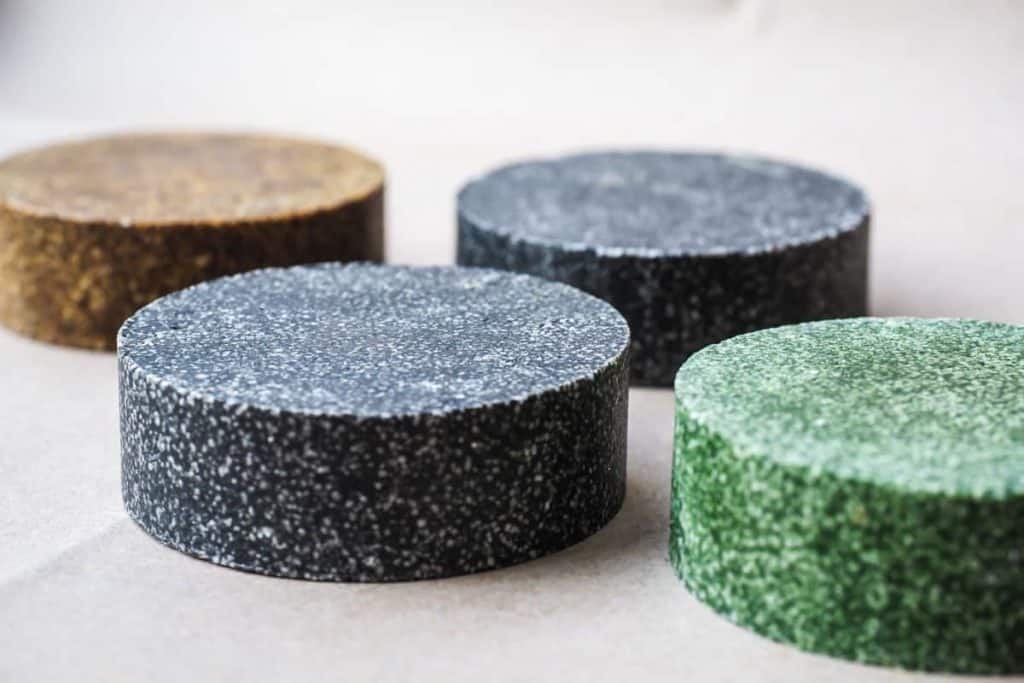
Credit: 123RF.com
Sodium cocoyl Isethionate (SCI) noodles
Also known as baby lather (as it’s gentle enough for a baby’s skin!), SCI is a very mild cleanser that effectively removes oil and dirt, but still leaves skin and hair feeling soft. SCI is commonly used in shampoo bars, liquid soap, whipped soap, shaving cream, facial cleansers, and more.⁴
Properties of SCI:
- Great foaming qualities.
- Leaves silky feeling on skin and hair.
- Rinses clean away without leaving residue.
- Resistant to hard water.
- SCI is milder than SCS.
- Doesn’t dissolve easily in water. Must be dissolved first in cocamidopropyl betaine (a secondary foaming ingredient).
- Blend into powder for ease of use. Use caution when blending into powder—wear protective glasses and a mask.
Sodium coco sulfate (SCS) granules
Another mild and coconut-derived surfactant that’s also biodegradable. SCS is slightly stronger than SCI, but still considered mild. Also used in shampoo bars, liquid soap, whipped soap, shaving cream, facial cleansers, and more.
Properties of SCS:
- Dissolves in water (unlike SCI which does not).
- Used as a secondary surfactant and is typically used together with SCI. Most recipes use a higher ratio of SCI than SCS.
- Great foaming qualities.
- Allows you to add nourishing oils and butters to your recipe without weighing down hair.
The takeaway: what are soap noodles, exactly?
Here’s a quick recap. Soap noodles is a broad term that refers to the raw materials used as a soap base to make commercial soap bars. These noodles are bought in bulk and are used to make many types of soap, including toilet soap, hand soaps, laundry soaps, and multipurpose soaps.
The term soap noodles also refers to anionic surfactant noodles sodium cocoyl isethionate (SCI), and sodium coco sulfate (SCS) used to make homemade shampoo bars. Both SCI and SCS are derived from coconut and are biodegradable and mild cleansing and foaming agents.
New to making soap? 🧼❓
👉We have a fantastic overview on the whole soapmaking process here: read our Timeless Guide To Soapmaking.
If you would like to see our soapmaking posts organized by topic type, see our Soapmaking Collection.

References
- Twincraft Skincare, What is Triple Milled Bar Soap? https://www.twincraft.com/twincraft-skincare-blog/triple-milled-bar-soap. Accessed February 2022.
- Grand View Research, Soap Noodles Market Size, Share & Trends Analysis Report By Application, Regional Outlook, Competitive Strategies, And Segment Forecasts, 2019 To 2025, https://www.grandviewresearch.com/industry-analysis/soap-noodles-market. Accessed February 2022.
- The U.S. Environmental Working Group, TETRASODIUM ETIDRONATE, https://www.ewg.org/skindeep/ingredients/706513-TETRASODIUM_ETIDRONATE/. Accessed February 2022.
- Wholesale Supplies Plus, Sodium Cocoyl Isethionate Noodles – SCI, https://www.wholesalesuppliesplus.com/products/sodium-cocoyl-isethionate-noodles.aspx. Accessed February 2022.

Author: Josh Tesolin
Josh is co-founder of RusticWise. When he’s not tinkering in the garden, or fixing something around the house, you can find him working on a vast array of random side projects.

